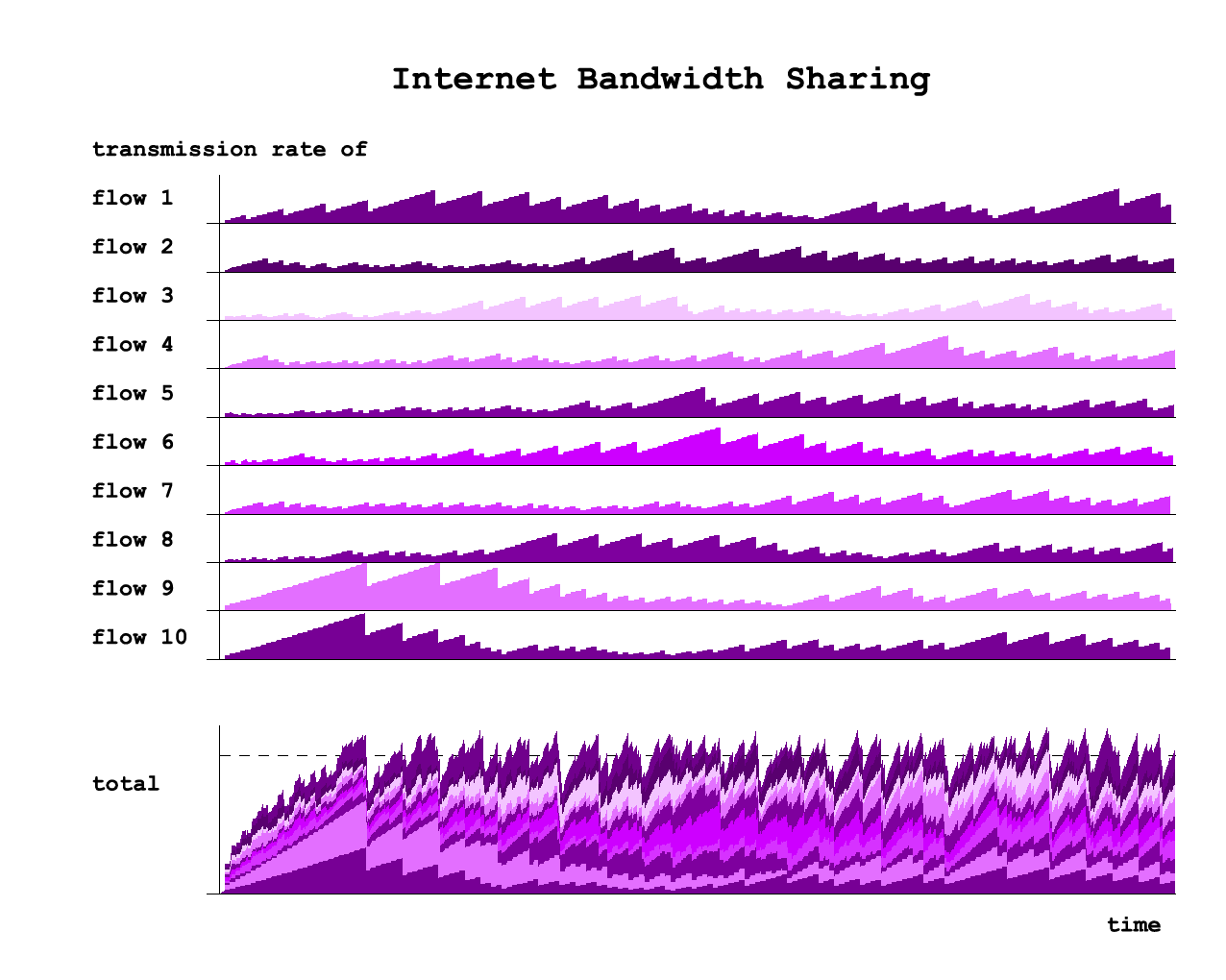Imperial College department of computing, Tuesday 24 May 2005.
[program]
[slides ppt]
Abstract.
The current Internet is not very good for transferring large files at
high speeds, nor for transmitting live audio and video. This is not
because of hardware limitations; it is because of problems with the
architecture of the Internet, and especially with how it deals with
congestion. Most Internet traffic is controlled by TCP, which
specifies how to adjusts the transmission rate of a traffic flow in
response to the perceived congestion. I will describe mathematical
models for TCP, and use them to answer practical questions like "Where
should I put my web server?" and "How big should buffers be?" The
ultimate goal of this research is to come up with a replacement for
TCP, and I will describe some of the proposals.
